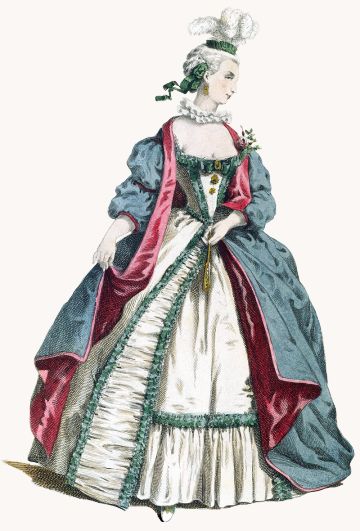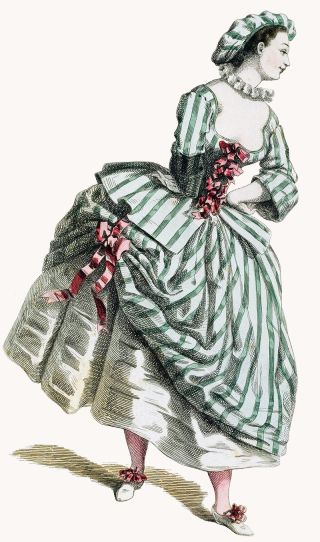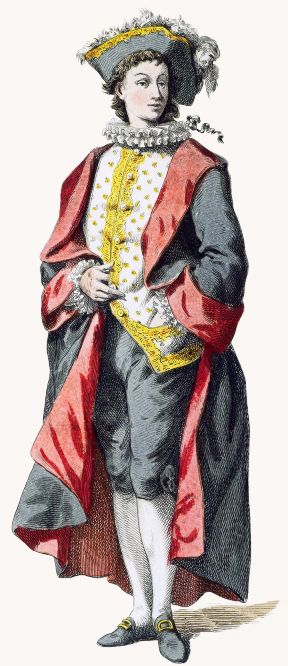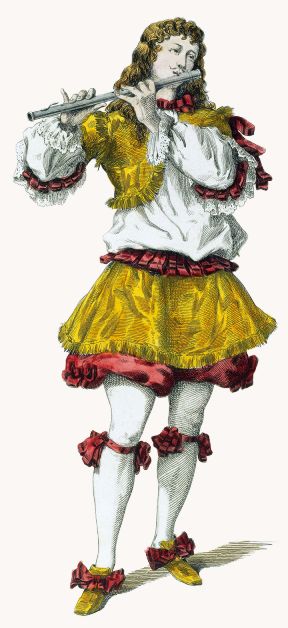

The Lovers bring into the Commedia dell'Arte those little touches of soap opera and "feuilleton" around which the action may easily be developed. Important in their role as much as with a flat personality (they're desperately in love ...) the Innamorati helped the public to identify and sink deep in the stories.
Elegantly dressed as the last vogue required (usually of the same color, just in case another couple of Lovers was in the play too, in which case we talk about First Lovers and Second Lovers) they reaffirm how much they were made for each other, the Innamorati create those situations of contrasted love, envy, gossip in which to implement the more famous/entertaining masks: Harlequin, Pantalone, Pulcinella.
Very often they are son and daughter of the two old folks, Pantalone the greedy and the Doctor the magniloquent.
The Lovers are young, wear no mask, and have a very strict but essential role in the play, and are a constant of the Commedia dell'Arte, and the action which gets the appreciation of the public any time Harlequin gets on stage.
Isabella, Colombina (the latter being more versatile, playing the Soubrette too) Silvia, Corallina, the more known Female Lovers, and Lelio, Flavio, Orazio, Silvio, Leandro and others are the men, all with a simple name, easy to remember (in contrast with the Captains, sometimes with very elaborate and noble-like names).
The Lovers never really made it into becoming a strength of the Commedia, but since the earlier times have always been present and necessary for the development of the action and of the canovaccio on which the stories were built.
Not so different as today's blockbusters from Hollywood, after all.



